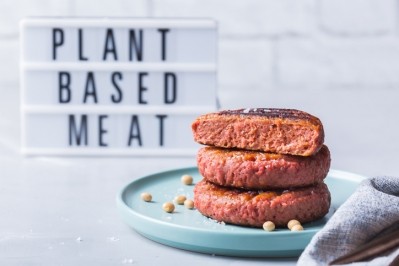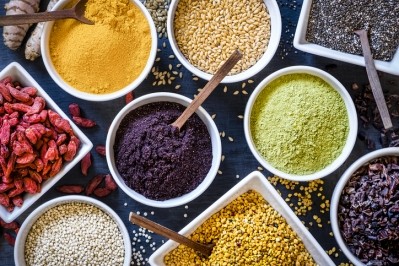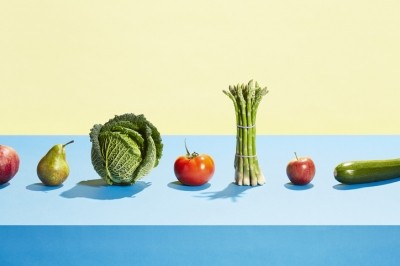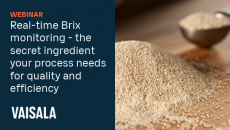Why high moisture extrusion could solve alt meat’s nutritional as well as structural challenges
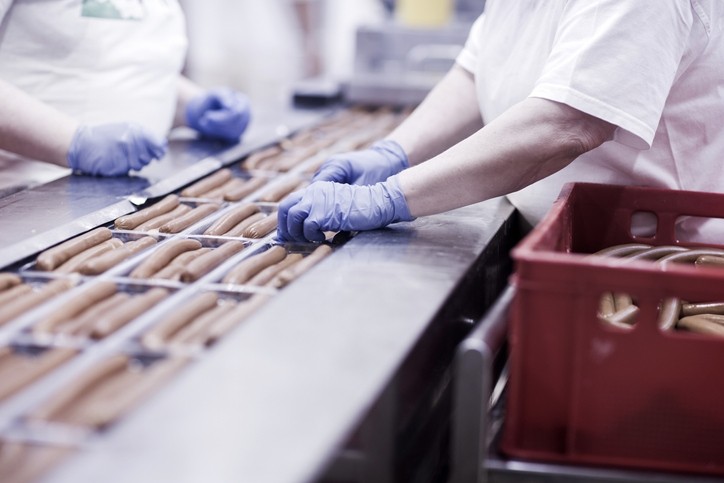
The industry is currently leveraging this technology to create meat-free products that better mimic the structural qualities of real meat. While the traditionally used low moisture extrusion delivers a fibrous, spongy texture and shelf-stable product that will need rehydrating (textured vegetable protein), high moisture extrusion delivers a more fibrous, striated, meaty product that must be chilled or frozen.
HME involves heating plant proteins in a twin-screw extruder that is then cooled in a precisely thermal-controlled dye leading to the formation of fibres: great for making numerous aligned, or V-shaped fibres, which can be cut and flavoured to create, for example, a small substitute chicken piece.
Other companies are developing proprietary technology to create horizontal, diagonal or vertical fibres to even better replicate the texture of real meat. However, the digestibility and bioavailability of plant protein is lower than meat protein and also must be countered. This nascent technology may too be able to boost the nutritional profile of plant-based meat and seafood as question marks still hang regarding the nutritional qualities of these products, revealed speakers at FoodNavigator’s Positive Nutrition Digital event.
A ‘softer’ way of extrusion
Moritz Kieswetter, Category Manager New Protein Foods, said that HME potentially has more nutritional benefits by being a ‘softer’ way of extrusion.
“The general consensus is that the milder you can keep the extrusion conditions, the more beneficial it is to the nutritional profile of the final application," he said. "High moisture extrusion has a higher moisture content and also the pressures and temperature tend to be lower as well. The critical difference is that it’s likely to be better nutritionally depending on the specific parameters of the ingredients and recipe.”
But there is a lot to learn about how different protein combinations might behave in extrusion, added René Floris Division Manager Food NIZO Food Research. That’s important as the industry attempts to look at ingredients beyond soy and pea and adopt a broader spectrum of plant-based options at an industry level, which is needed to help avoid intensified pressure on agricultural land.
The advantage of HME is so far all ‘about the texture’, he stressed. “There is surprisingly little know about the difference, if any, between the digestibility of the [wet versus dry] products. But what is also striking is that there is relatively little known as to why and how these textures are being built during extrusion. We know how to do it -- we know what buttons to push – but we don’t really understand yet what is going on fully.
“There’s more art to it than knowledge. If we understand more about how these structures are being built, we might be able to optimise the nutritional value. We’re not there yet, but because it’s such a big topic I’m sure we will soon be able to tweak the nutritional aspect.”
But HME has cost disadvantages and environmental question marks
However, HME technology is currently a more expensive investment for companies and a more expensive product for their consumers.
There are also potential environmental concerns with this type of technology, noted Nagesh Manepalli, Director of Business Consulting at market researcher Future Bridge. That’s important in a category that appeals to consumers for its potentially sustainability benefits.
“High moisture content will definitely need more energy levels and the consumption would be on the higher side because to maintain the moisture content we need more hydrators more temperature controls, more sensors which by default consume a lot of energy. So from a sustainability point the energy use is on the higher side.”

